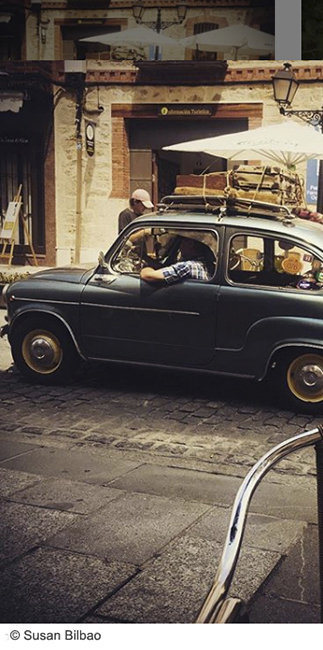Women heve allways been there
© Guillermo Labarca
 Since the dawn of photography in the 18th century, there have always been women active in this field, both in the amateur and professional sphere. The list of professionals is vast, and to illustrate it we will mention a few who were active in the 19th century: Constance Fox Talbot, Julia Margaret Cameron, Anna Atkins, Tina Modotti, Ilse Bing, among so many others.
Since the dawn of photography in the 18th century, there have always been women active in this field, both in the amateur and professional sphere. The list of professionals is vast, and to illustrate it we will mention a few who were active in the 19th century: Constance Fox Talbot, Julia Margaret Cameron, Anna Atkins, Tina Modotti, Ilse Bing, among so many others.
Many of them have impacted the world of photography with the quality of their images, the novelty of their aesthetic strategies, their technical innovations or the emotions they capture at the moment of shooting and convey at the moment of printing. The contribution of these female photographers is not comparable with what has been seen, and continues to be seen, in the other arts, like painting or symphonic or classical music. All arts have been organized institutionally by men and within male environments, so it is no wonder they dominate these universes.
Why this difference with photography? Why have female photographers managed to impose their presence from the beginning, even when inequality between the sexes was even more marked than today?
Some of them were to be housewives, but preferred to establish photographic laboratories in their kitchens motivated by a personal impetus or because of the presence of other photographers in the family, as are the cases of Constance Fox Talbot and Julia Margaret Cameron. They addressed the usual themes of photographers like landscapes or portraits, and prevailed thanks to the novelty of their strategies, but also, and without being fully conscious of it, they ended up redefining the art. They invented new ways to represent their bodies. They introduced matters that were uncomfortable in the practice of their art, if not full-fledged taboos, like sexuality, pregnancy and maternity. The oppressive domesticity and violence they were victims of, both on a physical and symbolical level. Almost all of them rejected the traditional disciplines, bastions controlled by men. They saw in the new formats, which were less prestigious but more free, a blank page on which to write their stories. Others wanted to be painters and studied fine arts. But disenchantment with the practice of art led them to the discovery of photography. So, they found a new way to look at reality and a space where they could do anything.
But another determining factor was that, in its beginning, photography did not have the prestige of painting or sculpture, nor therefore the interest of public powers (with the exception of the USSR) and more traditional galleries, which gave them more freedom than the established arts had. On the other hand, as photography wasn´t considered to be an art, it did not demand any particular competences nor institutional certification. Besides, the technical part was simple and did not require any training. The French historian Isabelle Bonnet, specialist in photography and gender issues, says that “Historically, photography has been the vehicle that has allowed women to access the world of art”. “At the beginning of the 20th century, women´s access to traditional artistic domains was still very much restricted. Many became professionals in the 1920s and 1930s.”
One of the novel contributions of female photographers from the middle of the last century onwards has been to put the female body – their own or of other women – in front of the lens so as to denounce the fierce structures of the patriarchy, the daily life of women, the model of their own or inherited femininity, cultural, ethnic or national differences. With completely different strategies, Cindy Sherman and Cristina García Rodero are examples of this. It hasn´t always been easy or joyful for female photographers; Claude Cahun who used to disguise herself in front of the camera to show what it meant to be a woman, was censored by the Nazis. There are others who have had major difficulties but all of them, or at least many of them, coincide with the anarchist Emma Goldman who at the end of the 19th century said “if I can´t dance to it, it´s not my revolution.”

